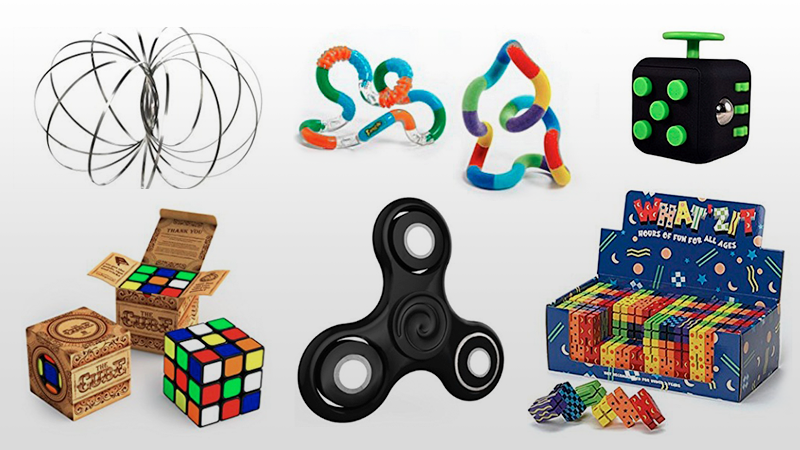What Fidget Toys Do
Any child can struggle with paying attention and focusing through an entire day of school. But for those with learning challenges due to ADHD it can especially hard. Sitting still in a classroom setting can be difficult for a child that can’t filter out noise, struggles with the clothes they are wearing, can’t copy notes from the chalkboard and has difficulty with fine motor skills. These children need movement to engage the brain for higher learning.
Kids (and adults) with ADHD often need something to help them feel settled so they can sustain their attention and focus. So-called fidget toys are a way to accomplish this. These are gadgets that activate different sensory areas without being too disruptive to others. Fidget toys come in many types.
How to Improve Your Focus by Fidgeting
Different Types of Fidget Toys
Leslie Walters Wright and Keri Williams at Understood.org identify a variety of types of fidget toys and the features that make them useful. These include:
- Calming fidgets – Wikki Stix are an example of a calming fidget toy. They can be bent, twisted and molded into various shapes. Pipe cleaners and key chains are similar types of calming fidget toys.
- Alerting fidgets – This type of fidget toy uses sound and / or color to stimulate the child. They make clicks and can be pulled apart and snapped together. Spinning tops, Pop Tools and balls that change color are good examples of this type of fidget toy.
- Chewy fidgets – Chewing gum is probably the most familiar type of chewy fidget. Some kids have better concentration when they have a pencil in their mouth or are chewing their nails. Chewy fidgets like Chewy Stix, chewable pencil toppers and silicone jewelry are useful chew fidgets.
- Resistance fidgets – This type of fidget toy is for kids who need to have their hands busy to focus. A good example is silly putty. Stress balls and squishy toys also make good resistance fidgets.
- Tactile fidgets – Some kids experience better concentration when they use a fidget that works by touching different textures. Anything that is sticky, gooey, slimy, hairy or scratchy could serve that purpose. Koosh balls, play foam, kinetic sand, rubbery squeeze toys, pop-beads and Velcro strips are good example of the tactile fidget.
You can find a large array of fidget toys at Focusfied.com.
Fidget Toys for the Classroom
Many fidgets that may be considered too noisy or disruptive to be used in a classroom setting and are best reserved for use at home. Kay Marner at ADDitude magazine has these recommendations for selecting fidget toys intended to be used in the classroom. She suggests that they be:
- Silent
- Unobtrusive.
- Tactile (not visual).
- Safe
- Tools (not toys)
- Inexpensive (since they are likely to be lost)
- Teacher-approved.



